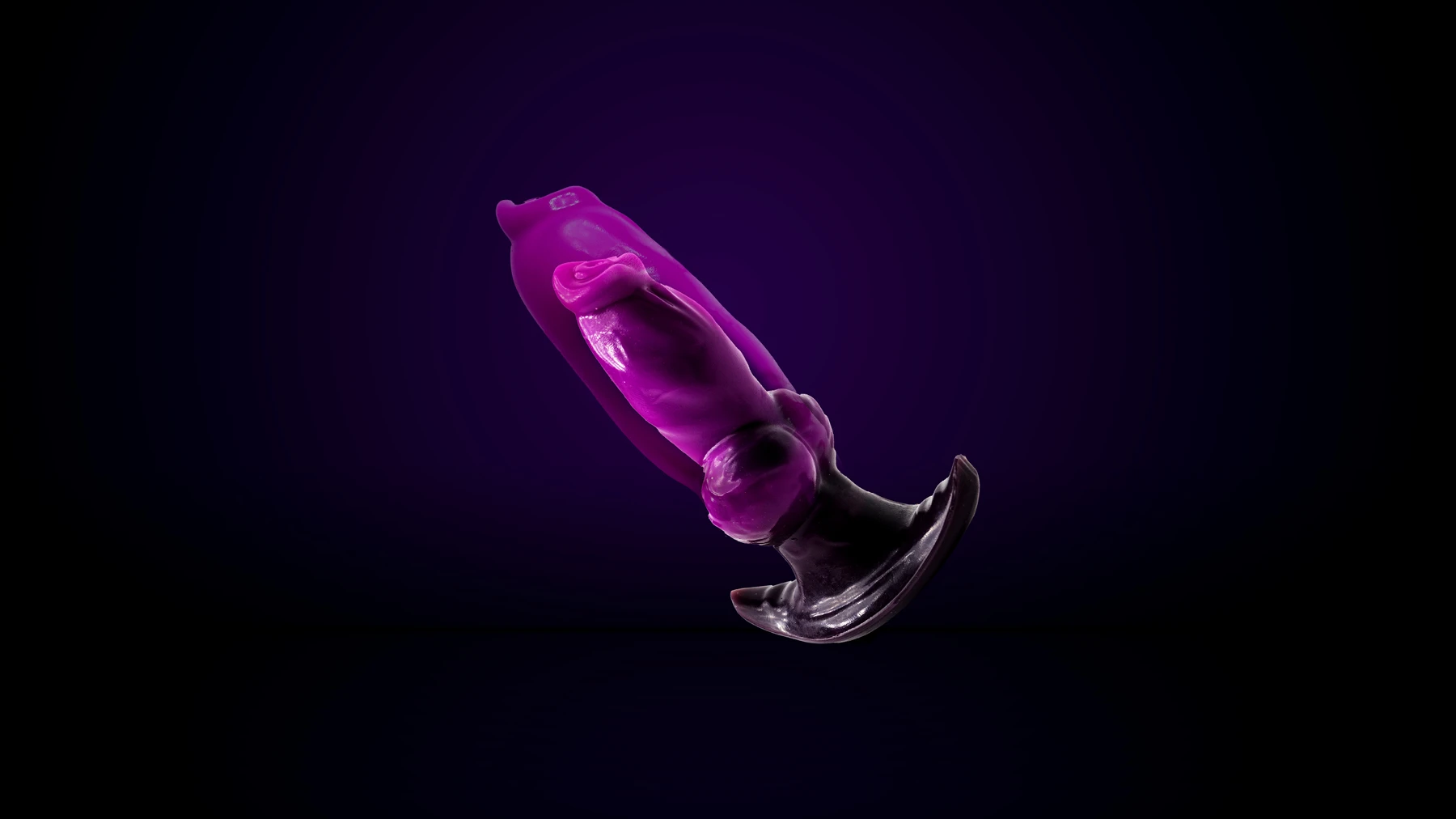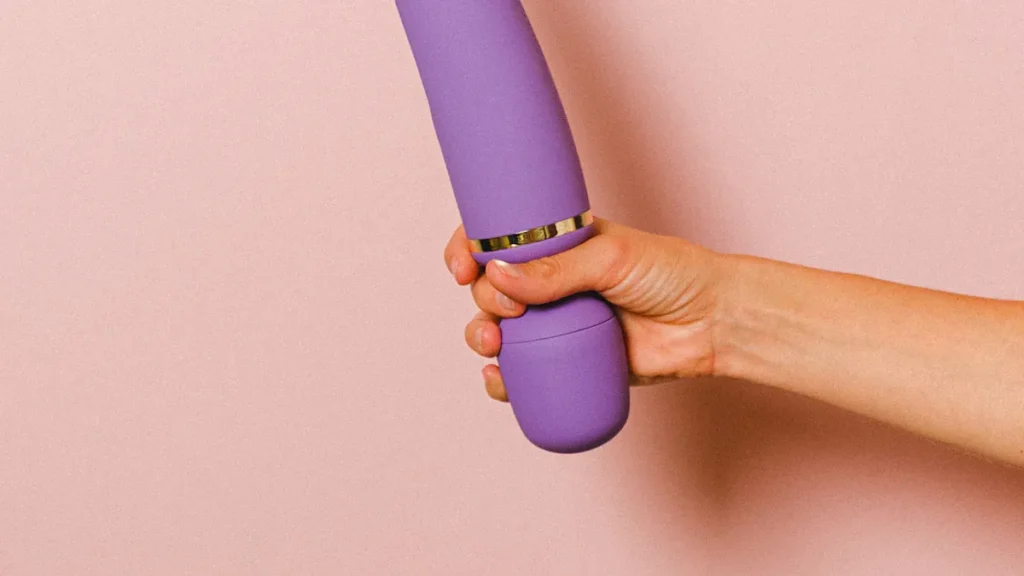Are PVC Dildos Safe for Use in 2025
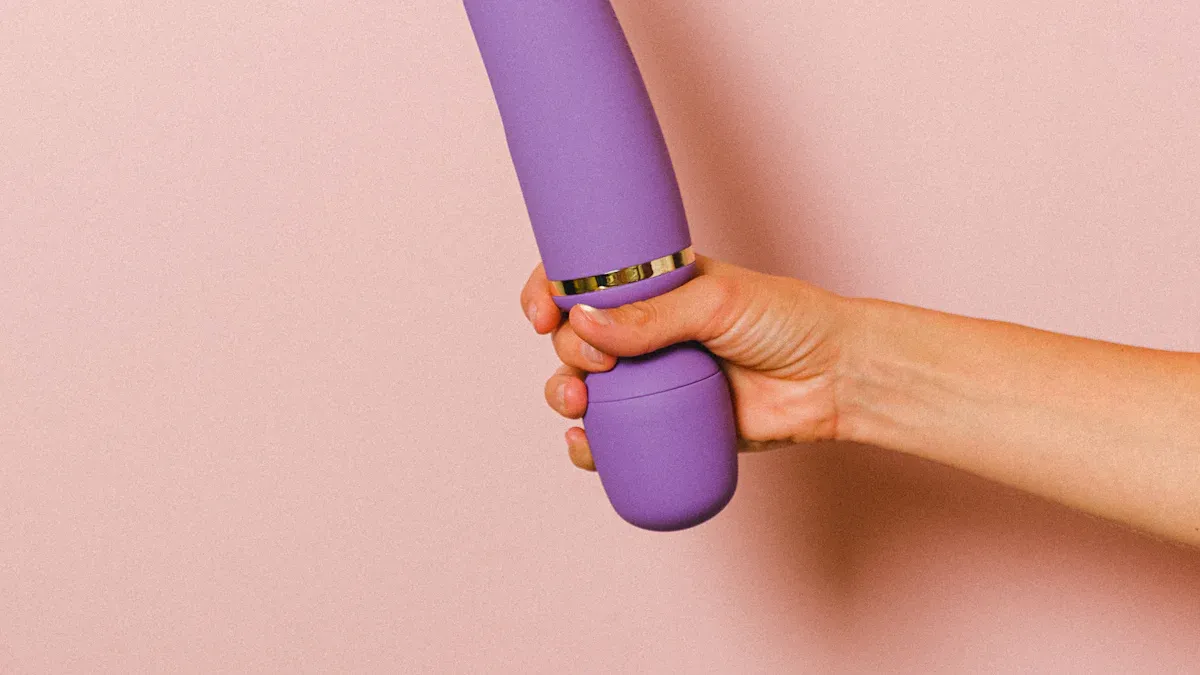
When I think about pvc dildos being safe in 2025, I see that experts still say to be careful. Many dildos, like Wolf Dildos, Corn Dildos, and Horse Dildos, use PVC because it bends easily and does not cost much. But there are real health worries. Some studies say phthalates in pvc dildos can go over safe levels and might cause health problems. These toys have tiny holes that let bacteria hide inside, and the material can break down as time passes. It is important to know about these risks and pick safer choices if you can.
PVC Dildos
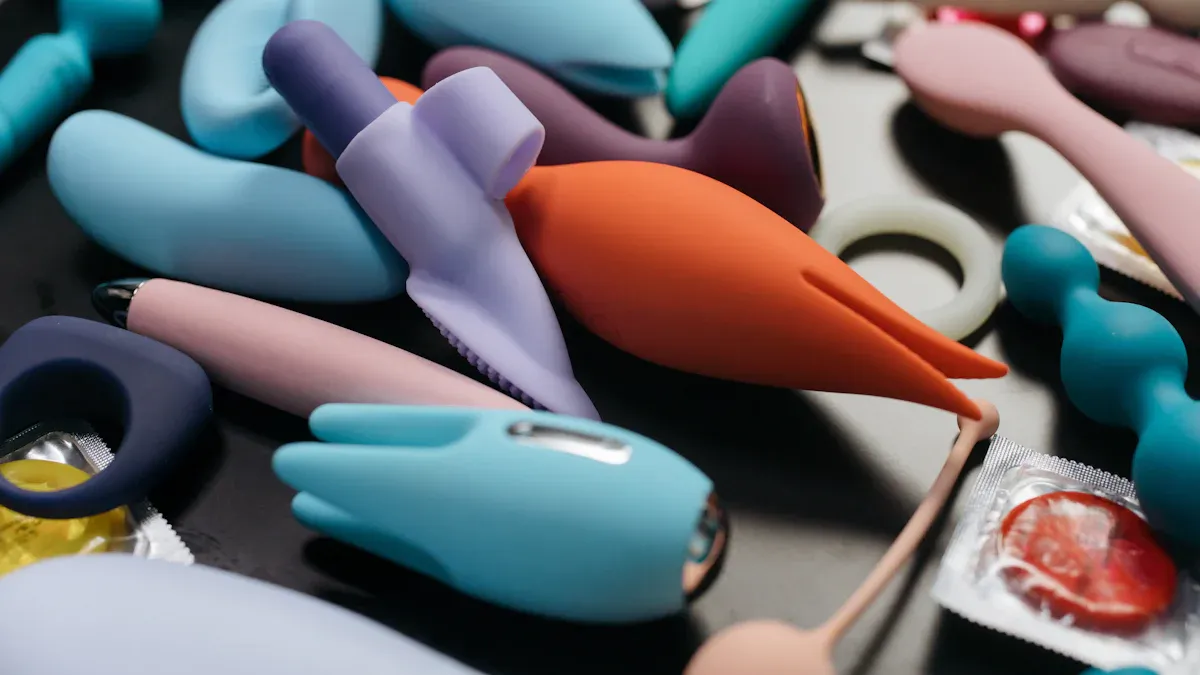
What Is PVC
PVC stands for polyvinyl chloride. It is a kind of plastic. Many companies use it to make lots of things. You can find PVC in pipes, floors, and raincoats. In sex toys, pvc dildos are very common. PVC is a man-made plastic polymer. It has a lot of chlorine in it. It also has chemicals called phthalates. These chemicals make the plastic soft and bendy. But they can also be bad for your health. About 90% of vinyl materials have PVC, except for safer types like EVA and PEVA. When companies make pvc sex toys, they sometimes add other harmful chemicals. These can cause health problems. Some problems are trouble breathing, kidney issues, and even cancer. Even with these risks, pvc dildos are still sold in many stores.
Why PVC Is Used
Manufacturers use PVC for a few reasons. First, pvc sex toys cost less to make than silicone or glass toys. PVC is easy to shape and mold. Companies can make many dildos fast and cheap. After the first design, they can make big batches for less money. This keeps prices low for buyers. PVC dildos make up about 25% of the dildo market. That is a large part. Many people buy them online or in stores. They are cheap and feel soft. Some reports say younger adults, like Millennials and Gen Z, buy these more. Even though there are health risks, the low price and easy making keep pvc sex toys popular. Some companies try to make safer kinds. But many still use phthalates and other risky chemicals. I always look for safety labels from groups like the Consumer Product Safety Commission before I buy any pvc dildo.
Tip: Always look for body-safe labels and check what materials are in your dildo before you buy.
Aspect | Details |
|---|---|
Market Share (2023) | PVC dildos hold 25% of the dildo market, second to silicone rubber at 45%. |
Sales Channels | Online stores account for 50% of sales, followed by retail outlets (30%) and specialty stores (20%). |
Market Growth Drivers | More people accept sexual wellness, and online shopping is growing. |
Market Challenges | Misinformation and safety worries affect how people buy pvc sex toys. |
Health Risks of PVC
Chemical Exposure
When I look at the health risks of pvc, I see that chemical exposure is a big problem. Many pvc dildos contain phthalates and other additives. These chemicals make the plastic soft, but they can also harm the body. Toxicological studies show that exposure to PVC micro- and nanoplastics can cause cell loss and even damage the intestines. Some reports link vinyl chloride, a chemical in pvc sex toys, to liver problems and a higher risk of liver cancer. I read that phthalates can build up in the reproductive organs. This can hurt sperm, lower sperm vitality, and disrupt hormones. Women can also face ovarian and uterine problems. Scientists have even found PVC microplastics in human semen samples. That means direct exposure is possible. When I use a dildo made from PVC, I worry about these potential health risks. Some studies found high levels of phthalates in pvc sex toys, even though rules ban these chemicals in children’s toys. The health risks of pvc are real, and I always think about them before choosing a toy.
Note: Even if a pvc dildo meets some safety rules, it can still release harmful chemicals over time, especially with regular use.
Porosity and Bacteria
Porous materials like PVC create more health concerns. I learned that pvc sex toys have tiny holes that you cannot see. These holes trap contaminants such as bacteria, mold, and fungus. Cleaning does not remove everything inside. A gynecologist explained that porous toys like pvc dildos are more likely to spread infections. The bacteria can hide deep in the toy, making it hard to keep good hygiene. I think of it like a kitchen sponge. No matter how much I wash it, some contaminants stay inside. This makes the risks of infection and even STI transmission much higher. Experts say non-porous toys, like those made from silicone or glass, are much safer. If I use a pvc dildo, I always use a condom to lower the risks. But I know that the health risks of pvc do not go away just by cleaning.
Porous pvc sex toys:
Trap bacteria and contaminants
Cannot be fully sterilized
Increase risk of infections
Degradation and Color Changes
PVC dildos do not last forever. Over time, they break down and change color. I have seen toys turn from clear to yellow, then red, brown, and even black. This happens because the plastic loses its strength and chemicals start to move out of the material. Scientists say that heat, air, and even touching other materials can speed up this process. When a pvc dildo gets sticky, brittle, or smells bad, I know it is time to throw it away. The breakdown of the material can release even more harmful chemicals and contaminants. Cleaning does not fix this. The risks only get worse as the toy ages. I always check my toys for any signs of color change or stickiness. If I see these signs, I stop using the toy right away.
Tip: If your pvc sex toy changes color, feels sticky, or smells odd, replace it. These are signs of degradation and increased health risks.
Phthalate-Free Claims
Are They Safer
When I shop for pvc sex toys, I often see labels that say “phthalate-free.” Many people think this means the toy is completely safe. I used to believe that too. “Phthalate-free” means the manufacturer did not add phthalates, which are chemicals that make plastic soft. Some studies link phthalates to health problems like hormone changes and cancer. Because of these dangers, many companies now make phthalate-free pvc toys.
But I learned that “phthalate-free” does not mean the toy is free from all harmful chemicals. Manufacturers sometimes use other softeners instead of phthalates. These new chemicals may not be safe either. The label can make people feel safe, but it does not guarantee the toy is healthy for the body.
Note: Always check what materials are in your toy, even if it says “phthalate-free pvc.”
Persistent Risks
I discovered that phthalate-free pvc sex toys still have many of the same risks as regular pvc toys. The biggest problem is porosity. Tiny holes in the material trap bacteria and make cleaning hard. Even if a toy does not have phthalates, it can still collect germs and cause infections. I also worry about other chemicals that might be in the toy. Some of these can leak out over time, especially if the toy gets old or sticky.
Here is what I watch for with phthalate-free pvc:
Porosity that traps bacteria
Other chemical additives that may be unsafe
Color changes or sticky texture as signs of breakdown
I always remember that “phthalate-free” does not mean risk-free. I try to choose non-porous toys when I can, because they are easier to clean and safer for my body.
Reducing Risks
Using Condoms
When I use a PVC dildo, I always put a condom over it. This step helps lower the risk of chemical exposure and keeps the toy more hygienic. Medical experts and studies say that condoms act as a barrier. They stop phthalates and other chemicals from touching my skin. Condoms also help prevent bacteria from getting into the toy’s tiny holes. I never share my dildo with anyone else, even with a condom. Sharing can spread germs and infections. Using a water-based lubricant with the condom makes the experience smoother and safer. I learned that many health groups recommend this method for safe use, especially with porous toys like PVC.
Tip: Always use a new condom each time you use your dildo to keep things clean and safe.
Cleaning Tips
I make sure to clean my dildo after every use. I use warm water and mild soap for easy cleaning. This helps remove most germs and keeps my toy in good shape. Studies show that steam cleaning can kill almost all bacteria on PVC surfaces within seconds. While I do not have a steam mop, I know that careful washing still helps a lot. I dry my dildo with a clean towel and store it in a dry place. I never use harsh cleaners because they can damage the material. Good hygiene means cleaning before and after each use. This habit keeps my toys easy to clean and lowers the risk of infection.
Wash with warm water and mild soap
Dry with a clean towel
Store in a dry, dust-free place
When to Replace
I check my dildo often for signs of wear. If I see color changes, sticky spots, or a strong odor, I throw it away. These signs mean the material is breaking down and is no longer safe. Old or damaged toys can release more chemicals and trap more bacteria. I do not wait for my toy to look very bad before replacing it. Keeping up with hygiene and replacing toys when needed helps me stay healthy. I always choose safety over saving money.
If your dildo feels sticky, smells odd, or changes color, it is time to get a new one for better hygiene and safe use.
Safe Alternatives to PVC Sex Toys
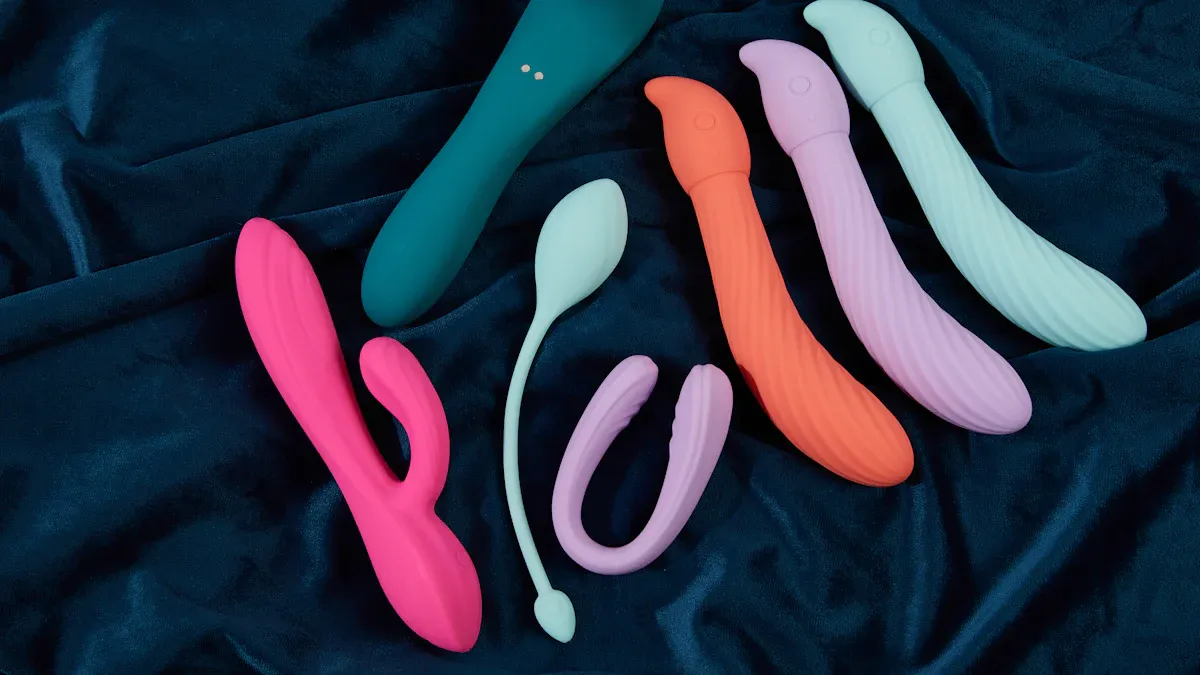
Body Safe Sex Toys
When I shop for body safe sex toys, I check what they are made of first. I want toys that are non-toxic and do not cause allergies. They should also be easy to clean. The best safe materials are medical-grade silicone, stainless steel, and medical grade glass. These do not have harmful chemicals like phthalates or BPA. They also do not make my skin itch or cause rashes. I like silicone toys because they are soft and bendy. Stainless steel toys are smooth, heavy, and very strong. Medical grade glass toys are safe, nonporous, and simple to clean.
I see more companies using body-safe materials now. They test their toys and put clear labels on them. I always look for safety marks like FDA approval or ISO certification. These marks help me trust the toy is safe for my body. Most body safe sex toys are nonporous. This means germs and bacteria cannot hide inside. I can wash them well after each use.
Tip: Pick toys made from body-safe materials. They last longer, feel better, and help you stay healthy.
Materials to Avoid in Sex Toys
Not all sex toy materials are safe. Some materials to avoid are PVC, jelly rubber, and plastics with BPA. These often have phthalates, which can hurt your body. Jelly rubber is risky because it is porous and traps germs. Phthalates and BPA can cause health problems like hormone changes and even cancer. Many experts say to stay away from these materials.
Here are some materials to avoid in sex toys:
PVC (polyvinyl chloride)
Jelly rubber
Plastics with BPA
Low-quality TPE or TPR that are not marked as body-safe
I always read the label before I buy a toy. If I see any of these, I do not buy it. I want to keep my body safe and avoid health risks.
Note: If you do not know what the toy is made of, use a condom over it or pick a trusted brand that uses only body-safe materials.
Comparing Alternatives
I like to compare materials before I buy a new toy. I want to know which ones are safest, last the longest, and are worth the money. Here is a table that helps me choose:
Material | Safety | Durability & Maintenance | Cost-Effectiveness |
|---|---|---|---|
Medical-grade Silicone | Safest, hypoallergenic, nonporous | Long-lasting, easy to clean | Higher price, worth the safety |
Stainless Steel | Hypoallergenic, nonporous | Extremely durable, easy to sterilize | Expensive, but lasts for years |
Medical Grade Glass | Nonporous, hypoallergenic | Durable, easy to clean, shatter-resistant | Mid-range price, reusable |
PVC/Jelly Rubber | Contains phthalates, porous, not hypoallergenic | Breaks down, hard to clean | Cheap, but risky for health |
BPA-containing Plastics | May leach toxins, not hypoallergenic | Can degrade, hard to clean | Low price, not worth the risk |
Medical-grade silicone, stainless steel, and medical grade glass are the best choices. They are nonporous, hypoallergenic, and easy to clean. These toys cost more at first, but they last much longer and keep me safe. I stay away from PVC, jelly rubber, and BPA plastics because they can cause health problems and do not last as long.
I also see that more people want eco-friendly and body-safe sex toys now. In 2023, over 70% of buyers picked toys made from medical-grade silicone or TPE. Companies test their toys for safety and use packaging that can be recycled. This makes me feel good about my choices and helps the planet.
Picking safe alternatives to pvc sex toys keeps me healthy and makes me feel safe. I always choose toys made from body-safe, nonporous, and hypoallergenic materials.
I found out that pvc dildos are still risky in 2025. Experts say PVC can let out bad chemicals and hold germs, even if it says phthalate-free. Using condoms does not stop all these dangers. To be safer, I pick non-porous toys like silicone, glass, or metal. These choices help me stay healthy and make cleaning simple. I always read labels and shop at trusted stores to keep myself safe.

